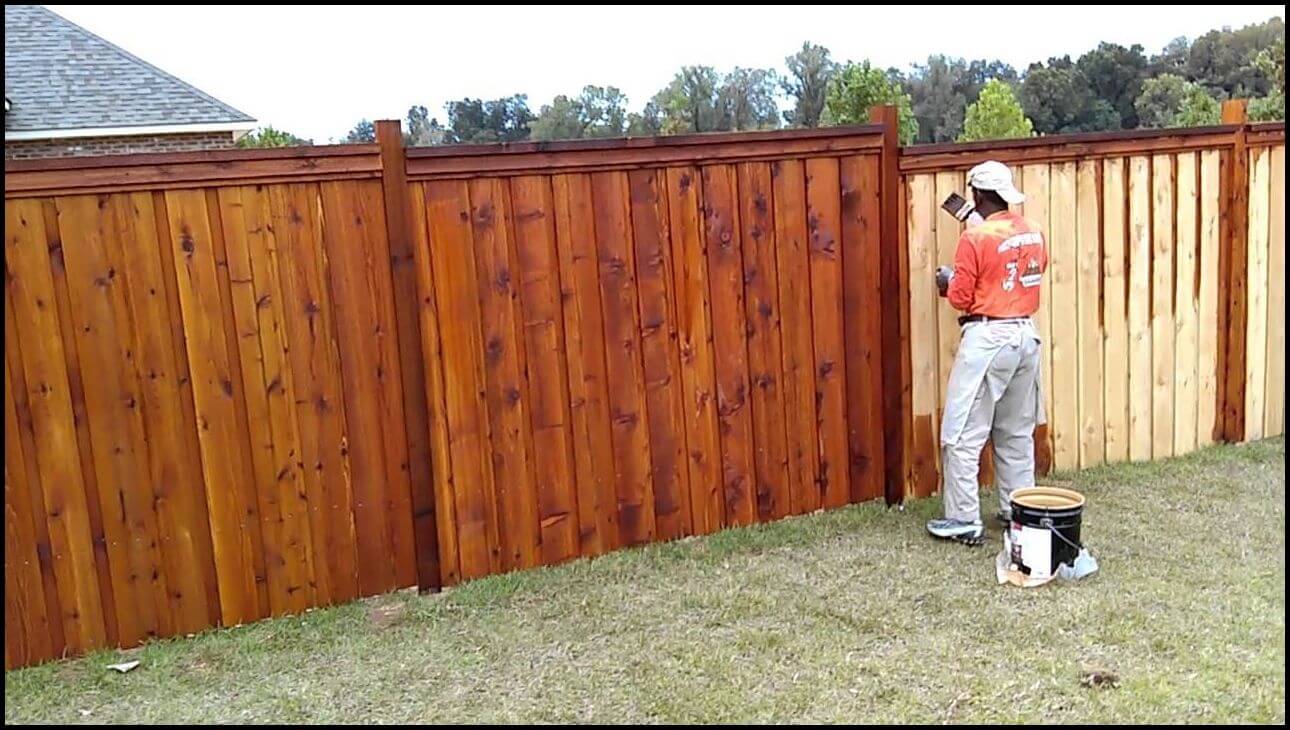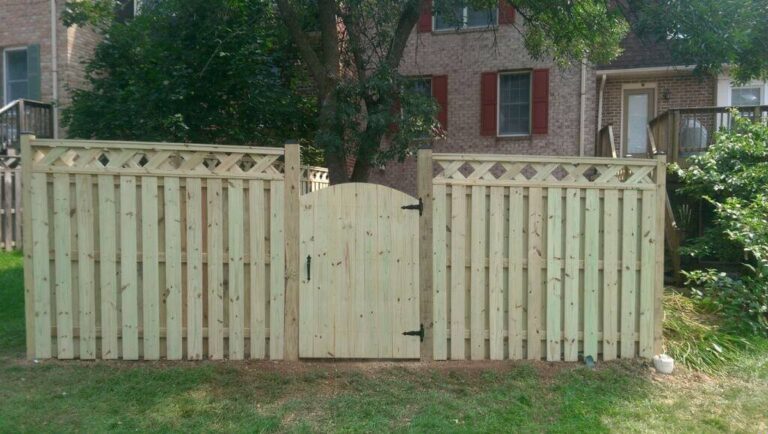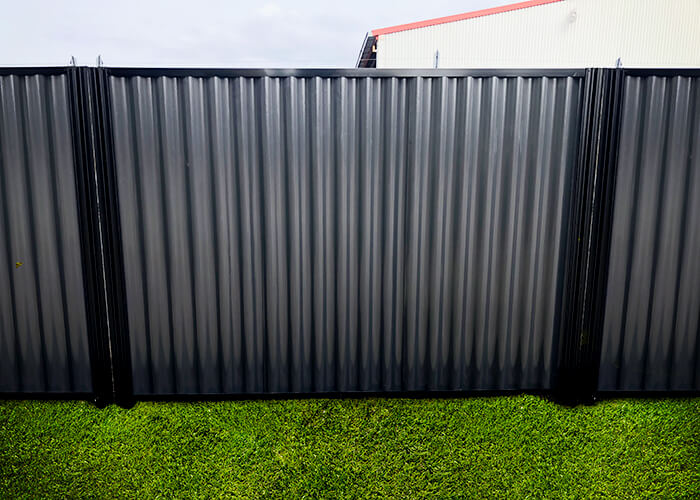Staining and sealing your fence helps protect it from weather and prolong its life. Proper preparation and application are key to achieving a successful finish that lasts.
Staining and sealing your fence not only enhances its appearance but also protects it from the elements, prolonging its lifespan.
Taking the time to prepare the surface properly and applying the stain and sealant with care is crucial to achieving a professional finish that will withstand the test of time.
We will explore some essential tips to help you effectively stain and seal your fence, ensuring it remains both aesthetically pleasing and structurally sound for years to come.
So, let’s dive into some valuable insights that will guide you through the process of staining and sealing your fence like a pro.

Choosing The Right Stain And Sealant
When it comes to maintaining the longevity and aesthetics of your fence, choosing the right stain and sealant is crucial.
Proper selection and application can protect the wood from weathering, rot, and UV damage, ensuring a beautiful and durable fence for years to come.
Considering The Fence Material
While selecting the right material is crucial, equally important is the expertise of professional fencing services.
For personalized advice and high-quality service, consider reaching out to experts like those at Fencing San Mateo. Their specialized knowledge in various fencing materials ensures your fence not only looks great but also lasts longer.
The right professional help can significantly enhance both the durability and aesthetics of your fence, adding value to your property.
Understanding Different Stain And Sealant Types
There are several types of stains and sealants available, each offering specific benefits and protection.
From clear sealants to semi-transparent and solid stains, understanding the differences between these options is vital in achieving the desired look and durability for your fence.
Factors To Consider When Selecting Products
When selecting stain and sealant products, several factors must be taken into account. These include the climate in your area, the level of sunlight the fence receives, as well as the desired maintenance frequency.
Considering these factors will help you narrow down the plethora of choices and choose products that best suit your fence and lifestyle.
Preparing The Fence For Staining And Sealing
Before diving into the staining and sealing process, it’s crucial to prepare your fence properly. This initial step will directly impact the final result, so it’s essential to give it the attention it deserves.
Preparing the fence involves several key tasks: cleaning and repairing the surface, sanding and smoothing any imperfections, and protecting the surrounding vegetation and property.
Cleaning And Repairing The Fence
Cleaning the fence is the first and most crucial step in the preparation process. Use a pressure washer or a stiff brush and a mild detergent to remove dirt, grime, and any mold or mildew.
Inspect the fence for any damage such as loose boards, broken pickets, or splinters. Make sure to repair any issues before proceeding with the staining and sealing.
Sanding And Smoothing The Surface
After cleaning and repairing, sanding the surface of the fence is essential to achieve a smooth and uniform finish.
Use a sanding block or an electric sander to smooth out rough spots, remove old paint or stain, and create a suitable surface for the new finish to adhere to.
Pay special attention to corners and edges to ensure an even application of the stain and sealant.
Protecting Surrounding Vegetation And Property
When undertaking the staining and sealing process, it’s crucial to protect any surrounding vegetation and property from overspray or splatters.
Use plastic sheets or drop cloths to cover plants, grass, and any nearby structures. This precaution will prevent accidental damage and ensure a clean and professional result.
Applying Stain And Sealant
When it comes to applying stain and sealant to your fence, it’s essential to ensure that you have the right tools and techniques, achieve a consistent application, and know how to maintain the fence after staining and sealing.
This crucial step in the fence maintenance process will not only enhance the appearance of your fence but also provide essential protection against the elements.
Using The Right Tools And Techniques
Before beginning the staining and sealing process, it’s important to gather the necessary tools and select a suitable technique to achieve excellent results.
Utilizing high-quality brushes, rollers, or sprayers can help ensure an even and efficient application of the stain and sealant.
Additionally, understanding the proper staining and sealing techniques, such as maintaining a steady and consistent hand while applying,
will contribute to a professional finish. Doing so will help maximize the protection and longevity of the fence.
Ensuring Consistent Application
Consistency in the application of stain and sealant is paramount for achieving a uniform and attractive appearance.
Prior to application, thoroughly stirring the stain and sealant to achieve a consistent pigment distribution is essential.
Using long, even brush strokes or consistent movements with a roller to apply the stain and sealant will help avoid streaks or patches, ensuring a smooth and homogeneous finish across the entire surface of the fence.
Maintaining The Fence After Staining And Sealing
After applying the stain and sealant, it’s crucial to maintain the fence to preserve its newly finished appearance for an extended period.
Regularly inspecting the fence for any signs of wear or damage, touching up any areas where the sealant may have worn off,
and cleaning the fence with mild soap and water to remove dirt and debris will help maintain the protective and aesthetic benefits of the stain and sealant over time.

Frequently Asked Questions
How Often Should I Stain My Fence?
It’s recommended to stain your fence every 2-3 years to maintain its appearance and protect it from weathering.
What’s The Best Time To Stain A Fence?
The best time to stain a fence is in the spring or fall when the weather is mild and dry for optimal absorption.
Can I Apply A Sealant Over The Stain?
Yes, it’s advisable to apply a sealant after staining your fence to provide an extra layer of protection against the elements.
Conclusion
Staining and sealing your fence is a crucial step in its maintenance and longevity. By following the tips provided in this blog post, you can ensure that your fence is well-protected and looks beautiful for years to come.
Don’t underestimate the power of proper staining and sealing for your fence’s health and appearance.







